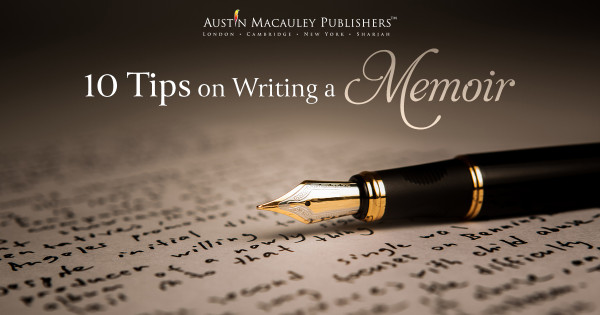
Tips for Writing a good Memoir | Complete User Guide
Reading books about personal triumph, accomplishment and struggle are inspiring. As readers, we are looking to connect and relate to what characters are feeling and experiencing.
Autobiographies and memoirs are great at making readers reflect and learn from others’ experiences. November is National Memoir Writing Month, so this is a great opportunity to talk about tips for writing a memoir.
Two of the most important elements of memoirs or autobiographies are reflections and takeaways. These are essential for the reader to feel invested in the story.
“A memoir’s takeaway is a gift to the reader: something heartfelt, universal and true.”
– Brooke Warner
We came across an amazing article by MasterClass goes into detail about all the significant elements segregating an autobiography from a memoir. The memoirs; however, differ from autobiographies in the sense that they unravel the account of an individual experience that explains a larger theme or idea. Whereas an autobiography is the account of an individual’s entire life in their words. Do check out MasterClass’ article for some more tips.
Below are 10 tips to keep in mind before you start writing your memoir.
1. Chalk out A Plan When Writing Your Memoir:
Before you start writing, chalk out your plan of action. The easiest way to do this is to list several life experiences and choose one. Write down some key elements of that experience that you will elaborate on. From those key elements, your theme will appear.
For example, in the memoir titled I’m OK by Savanah Boike about a young girl battling schizophrenia, the themes that are explored include mental illness, therapy and medication.
After establishing your theme, you can draft your opening sentence, important details, and a conclusion. Your conclusion will have the moral of your story and the takeaway that readers will remember long after they put your memoir down.
2. Focus on the Main Theme and Experience
When writing your memoir, you need to focus on the single experience that you are exploring and not your entire life story. That is what differentiates a memoir from an autobiography.
There are certain characters that you will not include in your memoir if they do not drive your story forward. You can eliminate them. The same goes for events, which may not be essential to telling your experience and playing to the larger theme.
That is why it is so important to first chalk out an initial plan (see step 1).
3. Read and Research Other Memoirs
Looking at how it’s been done already is a great way to get some insight into what you want your memoir to be like.
All memoirs are not structured the same and this is something you can only learn by reading other memoirs. For example, a memoir may be linear in that it describes events from A to B. It may be thematic in that it explores different themes like addiction, therapy and recovery.
In The Ways of the Warrior by DeAnna Whalen, we follow the journey of a woman who is battling breast cancer. She describes her everyday ordeals with medical professionals in her memoir. She uses a linear approach and includes her interactions with family and her inner turmoil as well. She wrote in her memoir, “This week has been the most eye-opening week. I always let myself listen to what the ‘doctor ordered.’ But this week I have learned my lesson – question everything. I have gone from what would have been chemotherapy starting last week to finding out – I would have been disqualified from clinical trials – ….”
It’s a good idea to have a clear idea of what structure your memoir will be when you are planning to write it.
4. Start with the Most Important Event
Often memoirs start with the most important event first. You want to capture your reader’s attention at the beginning of your book. You can then deconstruct this event as the book goes along and use flashbacks to go back, describing how the event occurred.
Your memoir does not need to be in chronological order, unlike an autobiography. You can tell events out of sequence. This makes your story more interesting and suspenseful for readers.
5. Describe More Rather than Tell
Let your reader imagine certain events and happenings. If you describe scenes and events rather than just narrate them, you will engage your reader more. It will also make them feel more involved in your story.
But the key here is to make sure you are not over-describing which can become a drag. You want to make sure that you use this technique only in those places where it is required.
6. Borrow Devices from Fiction
So just because your memoir is based on real events, this does not mean that you cannot use fictional elements to write your story. You can include elements like:
- A protagonist who is usually yourself.
- An antagonist who would be an adversary or rival.
- A conflict that could be the major problem you overcame.
- A setting that can become an integral part of your story.
It is important to try and take your readers on a visual journey when you are writing your memoir. You want to be able to describe events vividly so that they can imagine them happening as they read.
7. Make Sure to Tell the Truth
This is one of the most important elements to remember when writing your memoir. You want to be honest and tell the truth. This can be difficult if you have friends and family featured in your story who you do not want to expose. You can always change their names and conceal their identities.
You need to make sure you do not come across as bitter or revengeful in your memoir. You want to narrate the events as they are and let your readers decide for themselves.
The facts must present themselves through your lens. To the best of your ability, you should try to recall events as they happened. You can do this by adding authentic dialogues to your memoir. If you cannot remember the dialogues accurately, you can always tell your readers the circumstances in which you remember the event you are describing.
8. You are Telling Your Story
Writing your memoir in the first person is usually how it is done. It can be written in the third person but that is not usually the case.
When writing in the first person, you are narrating a story and that gives the reader insight into what you were feeling in those moments. This is important when writing your memoir as you want to give the reader a driver’s seat into the events that took place.
In Dogs, Cats, and Me by KathleenClark, we learn about the author’s love of rescued animals. The book describes the author’s attachment to animals and how they have become a fundamental part of her life. She shares intimate stories that are heartwarming and funny.
“Each step she took toward adulthood and independence tore out pieces of my heart. Her impending marriage was a major step. My daughter’s engagement is the reason I hold her entirely responsible for my obsession with dogs and cats.”
9. Showcase Your Personal Growth
Showing personal achievements, growth and accomplishment are trademark features of memoirs.
You can do this in the conclusion of your memoir as you wrap up your experience with a moral or summary of what you have learned from life in general.
In Bustle by Andre Holloway, we learn about a young man’s journey on the tough streets of Compton, California. He has been shot twice and had run-ins with drugs and violence but managed to make it and achieve great things.
Often when we are writing about personal growth in memoirs, we need to narrate the story so that our realizations come after difficult circumstances.
10. Write First, Edit Later
When you start writing your memoir, do not stop to edit each time. It is better to write the entire story before you edit it. That way, you will be able to jot down your thoughts and feelings and not be interrupted.
You could write one day and edit the next, but that is also not recommended as it can interrupt your train of thought. The best method is to write and then hire a publishing company to edit your manuscript for you. To learn how to submit yours to us for a review, click here.
Guidelines for Writing a Memoir
If you can follow these guidelines, you will be well on your way to writing a great memoir. The most important step is to start the process.
Follow these steps, and be sure to take your time when creating an outline of what life experiences your memoir will be about and its theme. A good memoir always starts with a clear plan.
Connect with Austin Macauley Publishers for more such blogs and submit your manuscript if you are looking for publishing your work. You can also make a quick and easy submission through the online submission form. You can stay updated with our new releases and activities by joining our family of authors and readers on Facebook, Twitter, and Instagram.
We use cookies on this site to enhance your user experience and for marketing purposes.
By clicking any link on this page you are giving your consent for us to set cookies



